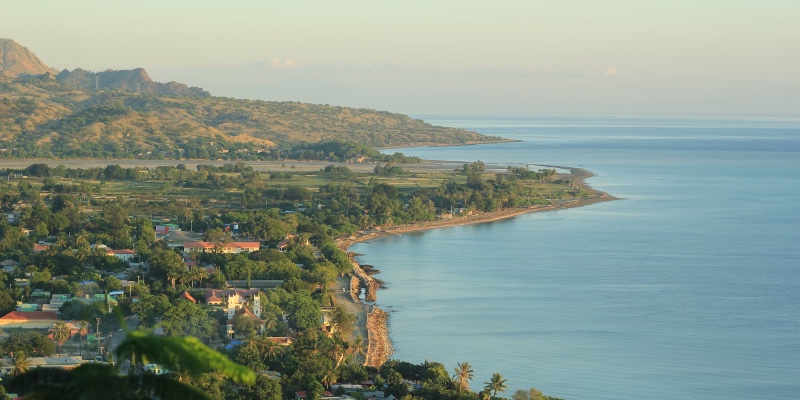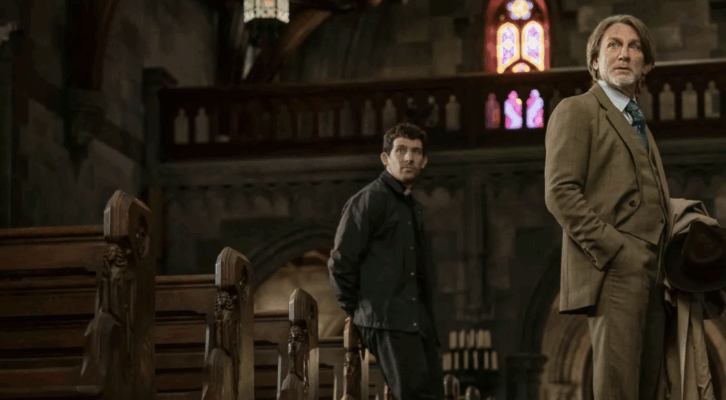OK, hear me out…. I accept that you probably don’t think about, or know much about, Timor-Leste, or commonly in English East Timor. It’s not top of your business or holiday destinations and you’re not seeking out crime writing set in the country. But Timor-Leste has a fascinating, if tragic, history and is worth a few moments of your time. Trust me! For a start the island of Timor is split in two – the western half remains part of Indonesia while the eastern (Leste means “east” in Portuguese) half, which was a Portuguese colony (the other half of course being a Dutch colony back when Indonesia was the Dutch East Indies), is now an independent nation – Timor-Leste. About the size of Hawaii on the eastern end of the Indonesian archipelago a little over an hour’s flight from Northern Australia. The country has a million and a half people who speak at least 15 separate languages. After Portuguese colonisation ended in the 1970s an insurgency occurred against the new Indonesian controllers of the area. It was a nasty insurgent war and lasted till 2002.
A good place to start if you want to know more of East Timor’s recent history is Timothy Mo’s The Redundancy of Courage (1991). It’s set in a fictional location – the island of Danu – but is clearly East Timor. It is a former Portuguese colony, gaining independence but invaded by a larger neighbour (Indonesia in reality). It is the story of the long uprising of the Timorese in the 1970s, the guerilla army, and many characters based on those who became the first post-independence leaders in 2002. For instance Mo’s character Joaquim Lobato is based on exiled leader José Ramos-Horta, who later became later became Timor-Leste’s Foreign Minister, Prime Minister and President. There is also the murder of a foreign correspondent covering the events, based on the real life murder of the Australian journalist Roger East killed by Indonesian troops in the capital Dili and th slaughter of five more Australian journalists later in the conflict.
The insurgent war carried on from the mid-1970s to 2002. Felix Nesi’s People from Oetimu (2025) was originally published in Indonesia and is set on the border between West (Indonesia controlled) and East Timor in July 1998. The men are gathering at the police station to watch the soccer World Cup. The Indonesian soldiers are distracted and, unbeknownst to them, political insurgents are in the process of invading the village. The novel jumps in time, 1998 and then back to the independence movements against Portugal in the early 1970s and the period of Japanese occupation in the 1940s. it is a novel of violence as well as interconnectedness and what happens when political and violent crimes are committed within interlinked societies. Nesi is from Insana in West Timor and has researched Timorese slavery in the Netherlands before becoming a bookseller and a novelist.
Chris McGillion lives in the Blue Mountains west of Sydney, Australia but is very familiar with Timor-Leste, its history and struggles. He’s been regularly visiting the country since 2010 and has poured what he’s seen there into his East Timor Crime Series. The first book in the series is The Crocodile’s Kill (2022). Crocodiles and crocodile attacks (East Timor has a record number of croc attacks on humans) are a problem in East Timor. Nobody likes to kill them – they are integral to the Timorese origin myth of man deriving from crocodiles. They are also a problem for FBI Agent Sara Carter, on secondment to INTERPOL in East Timor and assigned to investigate the case which is suspected of involving an illegal international adoption racket servicing childless rich Western couples. She is working with a Timorese police colleague, Vincintino Cordero, whose family escaped East Timor after the Indonesian invasion and who grew up in Australia.. Assisted by a young female Timorese police officer they must find a way to work together to hunt down those responsible for the abductions before villagers take matters into their own hands. And nerves are on edge after the local police kill a crocodile, the totem central to Timor’s creation myth.
Book two, The Sand Digger’s Skull (2023) sees Carter and Cordero unraveling the truth behind an historic mass killing, a more recent murder, and the death of a traditional village leader who used superstition to mask his greed while book 3, The Coffin Maker’s Apprentice (2024) sees Carter and Cordero dragged onto Dili’s gang wars. The last book in the series (so far…) The Island’s Vengeful Dead (2025) is set on the remote island of Atauro, north of East Timor’s capital of Dili, where an American marine biologist has been killed. Carter’s translator, a young Timorese police officer Estefana dos Carvalho, finds the island to be full of ghosts and secrets, a place where everybody has something to hide. All-in-all a great series to deep dive East Timor, its various belief systems and capital Dili.
Younger readers wanting to know more about East Timor might like The Long Patrol (2008) which charts Australia’s involvement with East Timor from World War Two, when many Australian commandos would have died without the aid of the East Timorese, though the insurgency of the 1970s to the referendum for independence in 1999 and the massacre of thousands of East Timorese to eventual independence.
The political violence of the 1990s is the backdrop for Scott Amour’s East of Java (2010) when American Jack Irvine is drawn into the very vortex of the carnage when he joins a plot to deliver arms to FRETILIN, the guerrilla force defying Indonesia’s army on East Timor.
And finally, Australian novelist Nicholas Jose’s The Idealist (2024) set in the run up to the East Timorese independence referendum in 1999 and taking place in Canberra, Washington DC and East Timor. Jake, an Australian defence analyst, is torn between his support for the people of East Timor, whose commitment to independence in the face of mounting violence he has experienced personally, and his responsibility for and complicity in the actions of his government. When he is found dead in the garage of his Washington home, his wife Anne is determined to see justice done. It’s perhaps an unfamiliar location, and maybe a little googling on Timor’s history will be required by readers but Jose’s novel has drawn comparisons to le Carré which should attract plenty of readers.
I’d suggest that East Timor/Timor Leste, its recent history, long independence struggle from both Lisbon and Jakarta and the city of Dili are not widely known and appreciated internationally. Perhaps some crime reading might open that door somewhat.

















